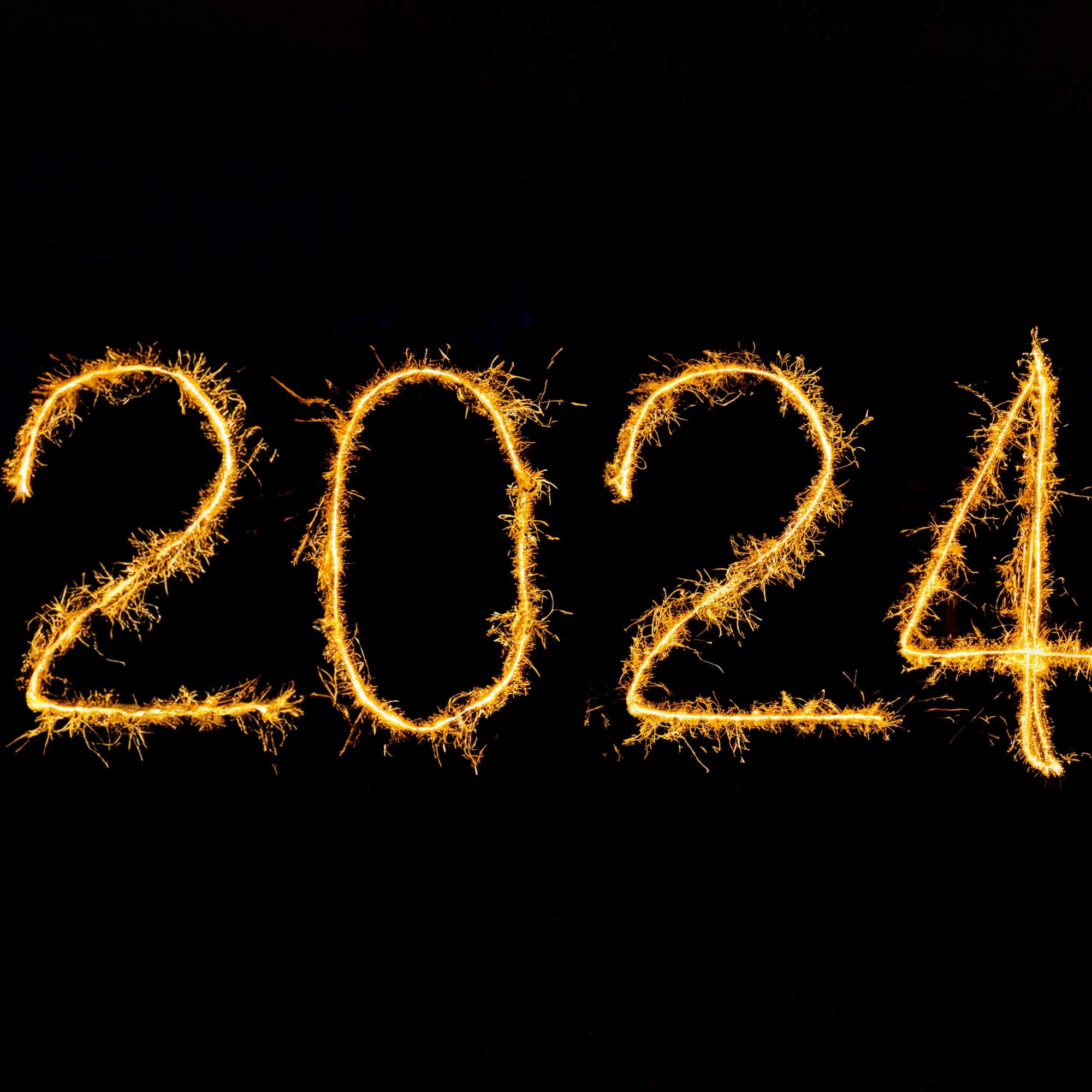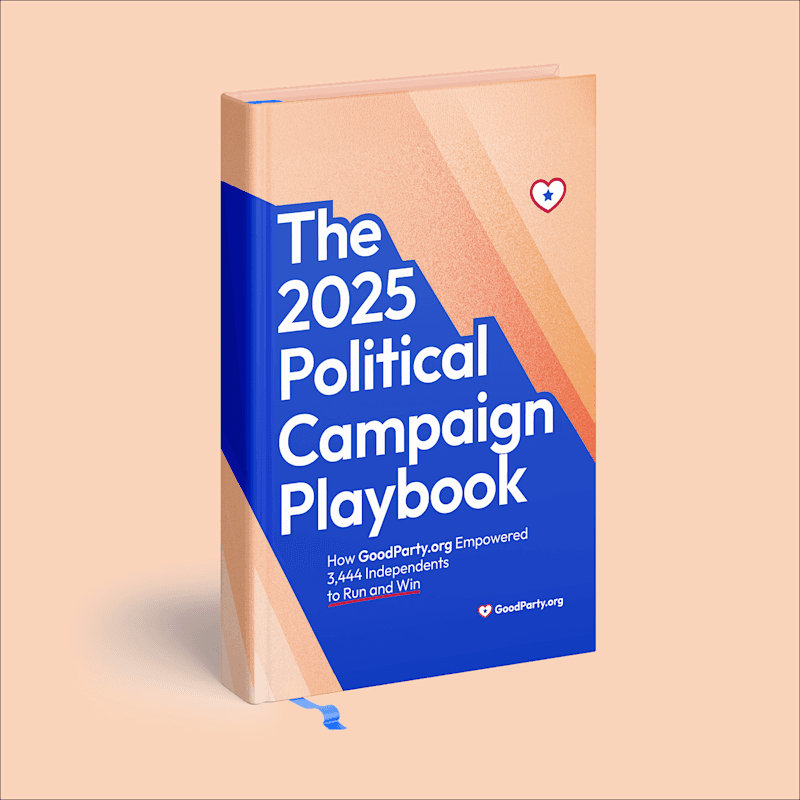
How Presidential Election Years Impact Down-Ballot Candidates
As the 2024 Presidential Election year unfolds, many Americans are turning their attention to the usual competition that occurs within and between the two major parties through primaries, debates, campaigns, and other events throughout the year. However, as we navigate this busting election season, it's crucial to shed light on a less discussed but equally important aspect of our democratic process: the impact of these on-cycle elections on down-ballot candidates, especially independents. This article aims to dissect how the heightened political atmosphere of federal election years shapes the success and visibility of these candidates in local and state races and give guidance as to how independent candidates can run their campaigns.
Off-Cycle vs. On-Cycle Elections
The American electoral landscape is characterized by a rhythmic alternation between off-cycle and on-cycle elections, each playing a distinct role in shaping political outcomes, especially for down-ballot races. Understanding these variations is crucial for independent candidates aiming to make a mark in their local and state races.
Impact on Down-Ballot Races
Off-cycle elections, which occur in non-presidential and non-midterm years, often see a reduced spotlight compared to their on-cycle counterparts. This lower level of national attention can be a double-edged sword for down-ballot candidates. On one hand, the reduced noise from top-ticket races allows for more focused attention on local issues and candidates, potentially benefiting those who can effectively communicate their platform and community relevance. On the other hand, the lack of a high-profile race at the top of the ballot often results in reduced media coverage and public interest, which can pose challenges in mobilizing voter support.
In contrast, on-cycle elections — coinciding with presidential or midterm congressional race — bring an amplified focus to all levels of the ballot. The heightened political atmosphere can increase the visibility of down-ballot candidates. However, these candidates often find themselves competing for attention in a crowded and highly polarized field, where the national discourse can overshadow local issues. This scenario demands strategic campaigning from independent candidates, requiring them to find innovative ways to connect their local agendas with the broader themes dominating the election cycle.
Differences in Voter Engagement and Turnout
Voter engagement and turnout are significantly influenced by whether an election is off-cycle or on-cycle. Historically, on-cycle elections witness higher voter turnout, driven by the increased public interest in national races. According to Zoltan L. Hajnal, a professor of political science at the University of California San Diego, "Nationwide, only 27 percent of eligible voters vote in the typical municipal election" while on-cycle elections typically see higher turnout rates. Furthermore, on-cycle election turnout is further influenced by whether it is a presidential election year or a midterm election year. For example, the 2020 Presidential Election had a turnout of 66.6% while the 2018 Midterm Elections had a turnout of 50.3%, both of which were higher than usual for their respective cycles. This elevated turnout can be advantageous for down-ballot candidates, as it provides a larger pool of potential voters. However, the challenge lies in persuading these voters, who may primarily be motivated by top-ticket races, to also consider the importance of local races.
Conversely, off-cycle elections typically experience lower voter turnout, often dominated by a more informed and issue-focused electorate. This scenario can be beneficial for independent candidates who have a strong grassroots presence and are deeply connected with local issues. These candidates can leverage the lower turnout to engage with voters on a more personal level, making a compelling case for their candidacy based on specific community needs and concerns.
In both scenarios, the key for independent candidates is to tailor their strategies to the unique characteristics of the electoral cycle they are competing in, maximizing their appeal to the electorate's varying levels of engagement and turnout.
The Influence of Presidential Elections on Voter Behavior
Presidential election years invariably transform the American political landscape, significantly influencing voter behavior. This shift has profound implications for local candidates, particularly those outside the mainstream party system. Understanding the nuances of this influence is key to navigating the complexities of such pivotal election years.
Increased Voter Turnout: Opportunities and Challenges for Local Candidates
One of the most notable effects of presidential elections is the substantial increase in voter turnout. This surge is driven by heightened public interest and the extensive media coverage that presidential races command. For local candidates, especially independents, this can be both an opportunity and a challenge.
On the opportunity front, higher turnout means a larger electorate and potentially more votes to be won. Candidates who can effectively align their messaging with the broader themes of the presidential election, and yet retain a focus on local issues, stand to benefit immensely. This alignment can be particularly effective in communities where national issues have significant local implications, allowing down-ballot candidates to resonate more deeply with voters.
However, the challenge lies in the overshadowing effect of the presidential race. Local issues and candidates can be drowned out by the national narrative. This requires independent candidates to be more creative and assertive in their campaign strategies. They must find innovative ways to engage with voters, highlighting the direct impact of local offices on community life and the importance of every vote down the ballot.
Changing Attitudes Towards Independent Candidates in a Polarized Environment
Presidential election years often heighten political polarization, which can alter voter attitudes towards independent candidates. In a highly charged political climate, voters tend to gravitate towards the perceived stability of major parties, viewing them as the primary contenders in shaping national policy. This polarization can create a challenging environment for independent candidates, who may be seen as less influential or as splitting the vote in critical races.
However, this polarization also presents an opportunity for independent candidates to position themselves as alternatives to the traditional two-party system. By focusing on non-partisan solutions and community-centric policies, independent candidates can appeal to voters disillusioned with the binary political narrative. The key is to tap into the growing desire among certain voter segments for new voices and perspectives in politics. These candidates can capitalize on the heightened political engagement of a presidential election year to build a platform that emphasizes unity and pragmatic solutions over partisan politics.
Presidential election years significantly influence voter behavior, creating a landscape filled with both opportunities and challenges for local independent candidates. Understanding and strategically responding to these dynamics is crucial for these candidates to effectively connect with voters and make their mark in the electoral arena.
Local and State Races in the Spotlight
Local and state races garner increased attention during major election cycles, influenced significantly by the timing of when various offices are contested. This electoral timing plays a crucial role in shaping the strategies of candidates, especially those running as independents or for third-party nominations.
Electoral Timing: Understanding When Different Offices Are Contested
Typically, local and state elections are held on a variety of schedules, some aligning with national election cycles and others occurring in off-years. For instance, many major cities hold mayoral elections in off-cycle years, whereas state legislative and gubernatorial races often coincide with midterm or presidential election years. This timing affects everything from voter turnout to campaign funding and media attention. Candidates need to be acutely aware of these schedules to maximize their visibility and impact. For example, aligning a campaign for a local office with a national election cycle might offer the advantage of higher voter turnout but also brings the challenge of competing with high-profile races for attention and resources.
State-by-State Variations in Election Cycles
Moreover, there is considerable variation in election cycles across different states. Some states have fixed terms for certain offices, leading to regular and predictable election cycles, while others may have more irregular schedules due to special elections or other political considerations. These variations require candidates to have a flexible and adaptable approach to campaigning. Knowledge of the local political landscape and voter tendencies in different states becomes invaluable in crafting an effective campaign strategy. Understanding the unique electoral rhythms of their state or locality helps candidates tailor their outreach and engagement efforts, ensuring they effectively connect with voters at the right time and in the right context.
Overcoming Challenges and Seizing Opportunities
In the dynamic arena of political elections, especially during high-profile election years, independent and third-party candidates face unique challenges. However, these hurdles also present significant opportunities for those prepared to navigate them with insight and strategy.
Leveraging the Surge in Electoral Engagement
A major election year often brings a surge in electoral engagement, characterized by increased public interest and voter turnout. Savvy down-ballot candidates can leverage this surge to their advantage. This involves aligning campaign messaging to resonate with the broader themes captivating the electorate while emphasizing the unique value and perspectives they bring to local issues. For instance, independent candidates can harness the heightened political awareness by organizing community forums, engaging in local debates, and enhancing their digital presence to reach a wider audience. This period of increased political activity is an opportune time to amplify their voices and connect with voters who may be more receptive to alternative viewpoints.
Navigating the Spoiler Effect and Political Polarization
In a politically polarized environment, independent candidates often grapple with the 'spoiler effect' - a perception that their candidacy might inadvertently influence the election outcome in favor of one major party over the other. To navigate this, candidates must craft a narrative that transcends traditional party lines, focusing on common ground issues and non-partisan solutions. This approach not only mitigates the spoiler effect but also appeals to a broader spectrum of voters disillusioned with polarized politics.
Furthermore, political polarization offers a unique opportunity for independents to position themselves as unifiers. By emphasizing a commitment to community-focused policies over partisan agendas, they can attract voters from across the political spectrum, including those seeking alternatives to the entrenched two-party system.
Effective Campaign Strategies in a High-Profile Election Year
Developing effective campaign strategies is crucial in a high-profile election year. This involves a keen understanding of the electorate's priorities and media trends. Independent candidates should focus on building a strong grassroots campaign, leveraging social media and digital platforms for broader outreach. Personalized voter engagement, such as door-to-door campaigns or community events, can be particularly effective in making a lasting impression.
Additionally, strategic alliances with local organizations and community leaders can enhance a candidate's visibility and credibility. These alliances should be based on shared values and goals, providing a platform for candidates to showcase their commitment to addressing local issues. Lastly, in an era where media plays a pivotal role in shaping public opinion, independent candidates must adeptly manage their media presence. This includes not just traditional advertising but also a strong narrative on social media platforms, where they can directly engage with voters, share their vision, and respond to current events in real-time.
Conclusion: Transforming Challenges into Opportunities
In conclusion, major federal election years present a unique landscape for down-ballot independent candidates, filled with both challenges and opportunities. While the surge in voter turnout and heightened political engagement can overshadow local races, these elements also provide a platform for greater visibility and influence. Independent candidates, by embracing innovative strategies and focusing on community-centric issues, can turn potential hurdles into stepping stones for success. Navigating the complexities of political polarization and the spoiler effect demands not just political savvy but a deep commitment to the principles of grassroots democracy. Ultimately, these election cycles offer a valuable opportunity for independent voices to be heard and to impact the political narrative at both local and state levels. The key lies in recognizing these challenges as opportunities to redefine the political landscape, one election at a time.
Take advantage of GoodParty.org’s free campaign tools for independent candidates to give your campaign the competitive edge it needs.
Photo by Moritz Knöringer on Unsplash

